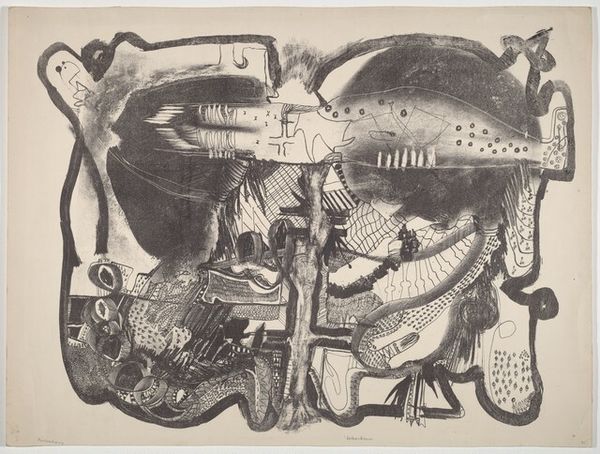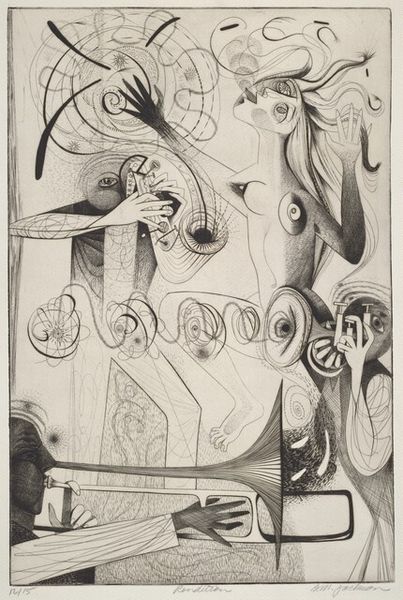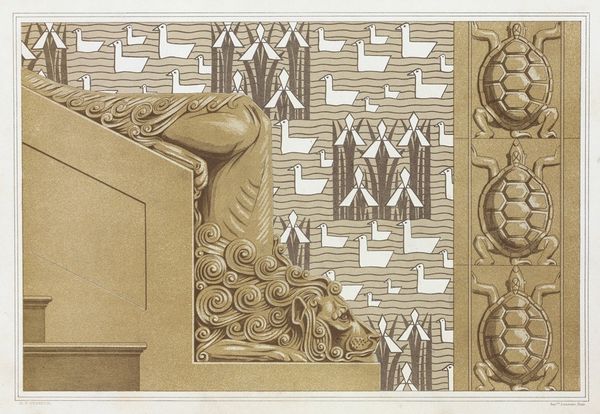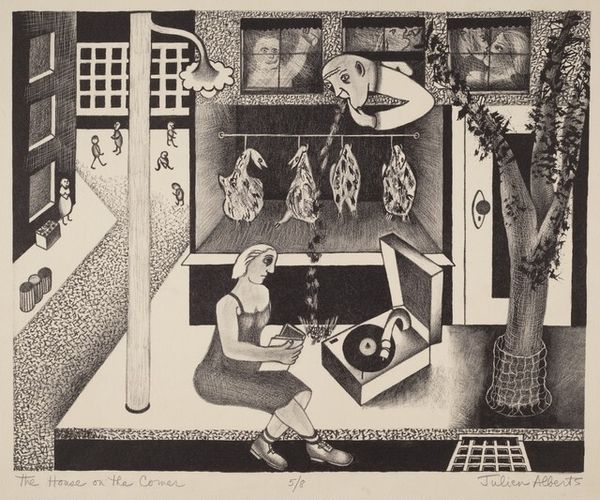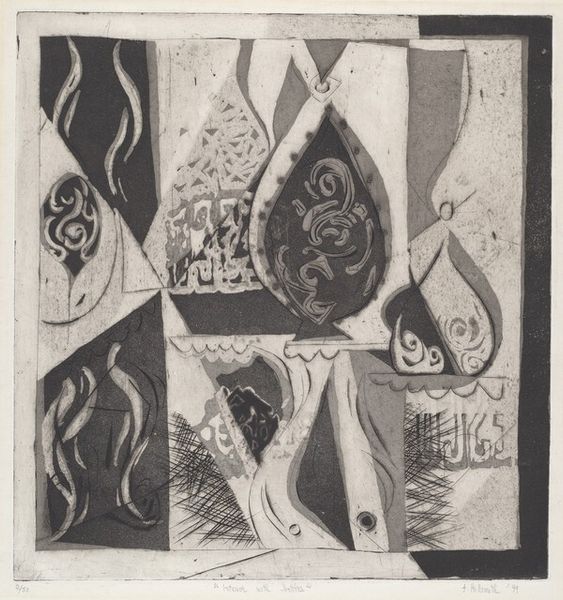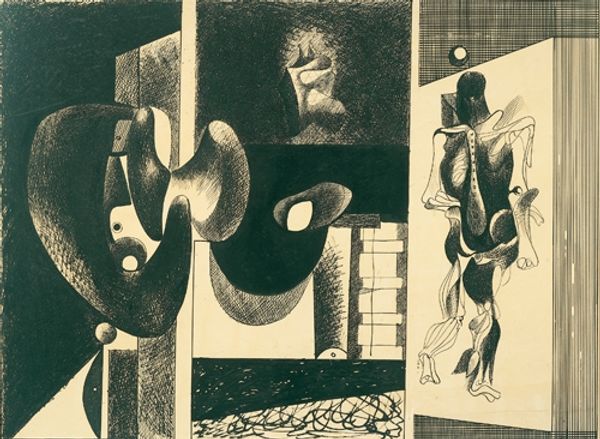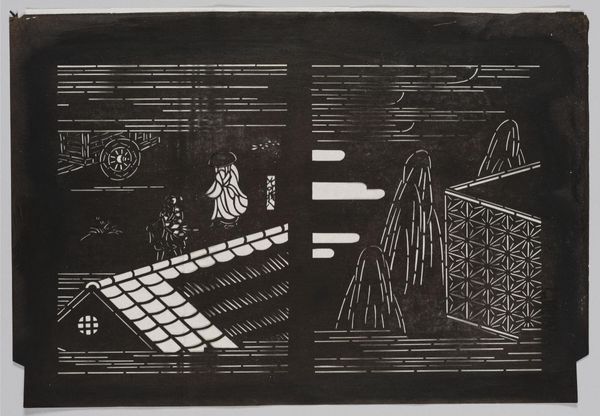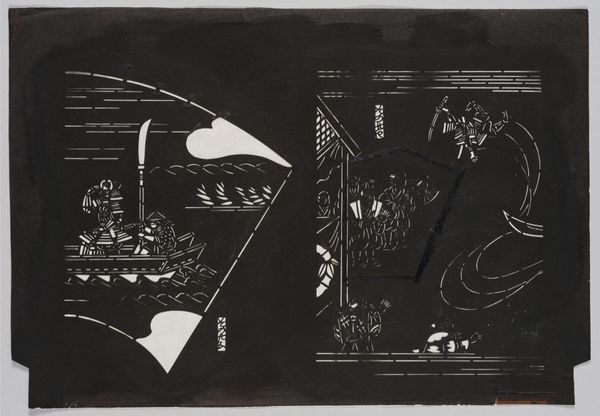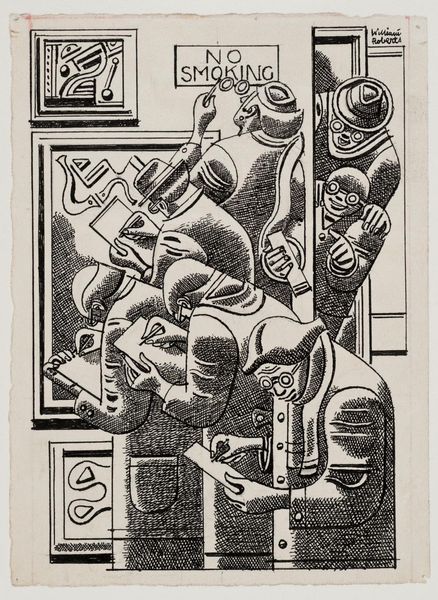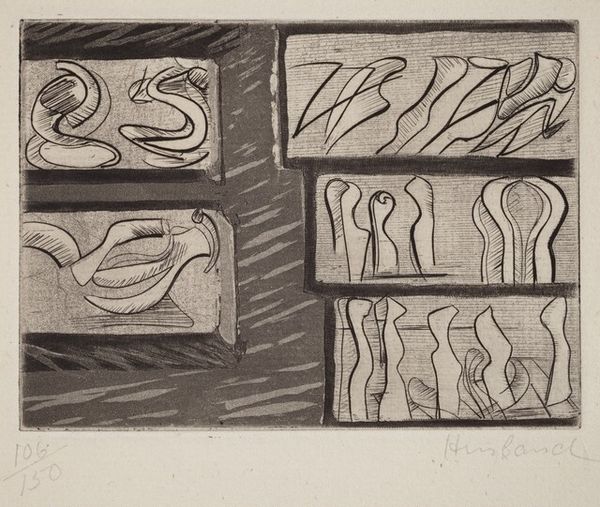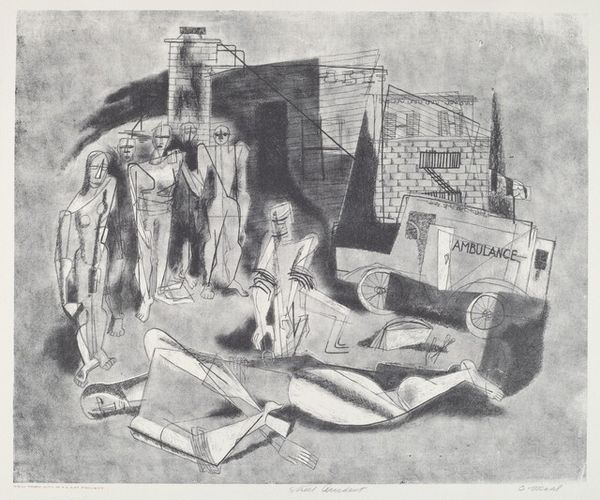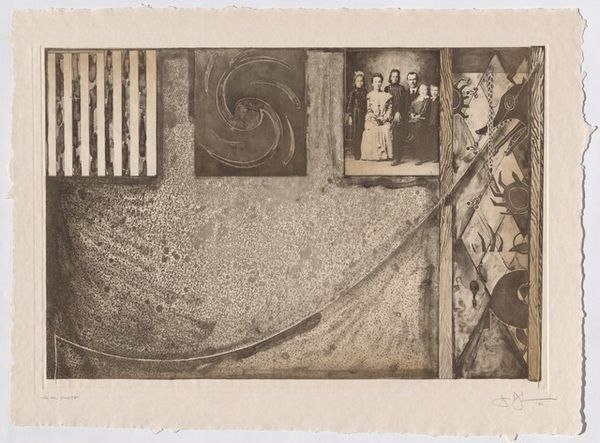
drawing, print, graphite
#
drawing
#
narrative-art
# print
#
figuration
#
line
#
graphite
#
modernism
Dimensions: image: 295 x 394 mm sheet: 353 x 505 mm
Copyright: National Gallery of Art: CC0 1.0
Clay Edgar Spohn made this drawing, titled *The Four Stages of Life*, using graphite on paper. The image presents a vision of life as a set of enclosed spaces, one succeeding the other. Spohn was a member of the San Francisco Bay Area avant-garde scene from the 1930s onwards, an important center for modernist art outside New York. The image seems to be a deliberately personal mythology. With its self-consciously archaic and mysterious symbols it resembles the work of European Surrealists like Max Ernst and Giorgio de Chirico. Spohn made this work during a time when the institutions of art were beginning to recognize and support non-representational art. As art historians, we can speculate on how Spohn’s cultural background shaped his artistic vision. Archival resources, such as exhibition catalogs and artists' writings, might offer further clues into the personal and cultural significance of his imagery. The stages of life, then, can be seen as a set of cultural constructions as much as a biological certainty.
Comments
No comments
Be the first to comment and join the conversation on the ultimate creative platform.
